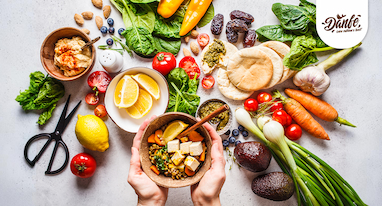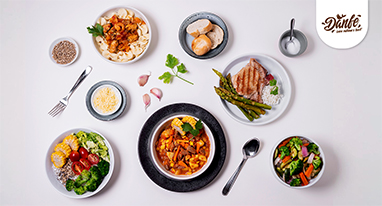Spectacular Health Benefits & Recipes of Masoor Dal
BY DANFE |
Lentils are an essential part of a daily diet. The lentil family has a wide variety of lentils that can be cooked in different ways. Masoor Dal is one of the most popular types of lentils in Indian cuisine. This red lentil had been a favorite of Queen Victoria, who loved it in soups so well that she gave it her name, Malika Masoor. For ages, masoor dal has been cultivated extensively in the Indian subcontinent. Due to its split lentil nature, it is an easy-to-cook lentil that needs no soaking beforehand. Masoor dal has a mild sweetness and earthy flavor that melds well with all spices and can be cooked into various delicacies.
What is the Nutritional Content of Masoor Dal?
Masoor dal or red lentil is one of the most widely used lentils in Indian cuisine owing to its indispensable nutritional content and therapeutic benefits. A 120 gm serving of Masoor dal contains 14 grams of protein, 8 grams of dietary fiber, 44.5 grams of carbohydrates, and 6 mg of iron. Masoor dal is loaded with iron, fiber, protein, folic acid, calcium, and magnesium, and is also naturally vegan and gluten-free. It also contains a considerable amount of vitamin C, B6, B2, and magnesium. There are many benefits of red lentils:
Health Benefits of Masoor Dal
- Regulates Blood Sugar Levels: Masoor dal has a low glycemic index and is high in dietary fiber. The combination of these two factors helps ensure that sudden blood sugar spikes are prevented. This makes masoor dal a good addition to diabetic diets.
- Helps in Weight Management: The protein and fiber in masoor dal combined with its low-calorie value help in feeling full for longer along with faster energy conversion. This aids in weight management.
- Helps Strengthen Bones: A significant amount of calcium, phosphorus, and magnesium found in masoor dal contributes to bone health. Masoor dal also helps prevent osteoporosis.
- Boosts Immunity: Masoor dal is packed with essential vitamins, antioxidants, and minerals that help build the body’s immune system. Antioxidants also protect cells from free radical damage, preventing cellular aging with their anti-aging effects.
- Boosts Energy Levels: The slow-burning complex carbohydrates in masoor dal provide lasting energy for the body. Furthermore, masoor dal is a good source of iron, which is essential for the transport of oxygen through the body and energy production.
The masoor dal nutritional value is high and it has a creamy, nutty flavor when it is cooked. It can be used in a variety of dishes and absorbs spices well, making it ideal for everyday cooking. Here are a few simple recipes using masoor dal that are both delicious and easy to make.
Masoor Dal Tadka
[Source: Freepik]
This simple masoor dal curry is generally served with either rice or roti. Masoor dal tadka is traditionally seasoned with spices like chili powder, garam masala, and turmeric.
Ingredients
- 1 tbsp ghee / clarified butter
- 1 bay leaf
- 2 medium tomatoes (finely chopped)
- 1 medium onion (finely chopped)
- 1 tsp ginger-garlic paste
- ½ tsp turmeric powder
- 1 green chili (slit)
- 1 tsp kashmiri red chili powder
- salt to taste
- 1 cup masoor dal
- 3½ + 1 cup water
For tempering:
- 1 tsp ghee / clarified butter
- 1 tsp mustard seeds
- ½ tsp cumin seeds
- pinch of hing / asafoetida
- ¼ tsp Kashmiri red chili powder
- ¼ tsp garam masala powder
- Few curry leaves
- 1 dried red chili
Instructions
- First, heat ghee and bay leaf in a pressure cooker.
- Add onions and continue to sauté.
- Add ginger and garlic along with the chilies. Stir well.
- Add 2 finely chopped tomatoes and cook until soft and mushy.
- Stir in ½ tsp turmeric, 1 tsp red chili powder, and salt to taste. Sauté the spices until they become aromatic.
- Add 1 cup washed masoor dal as well.
- Add 3½ cups of water and give it a good stir.
- Cover the pressure cooker with a lid and cook for 2-3 whistles.
- Add water and adjust consistency.
- During this time, heat ghee in a small pan and add all of the tempering ingredients. Once the tempering splutters, pour it over the dal.
- Combine chopped coriander leaves with the gravy.
- Serve hot masoor dal curry with rice or roti.
Masoor Dal Pakoda
[Source:Mytastycrispy]
This is a crisp, crunchy, protein-rich experience you wouldn’t want to miss if you love pakoda and fritters! This recipe only needs a few ingredients to make these crispy masoor dal fritters, which can be enjoyed alongside mint chutney or even ketchup.
Ingredients
- 1 cup masoor dal
- 1 large onion finely chopped
- Green chilies chopped
- 3 cups of oil for frying
- ½ tsp turmeric powder
- Salt (to taste)
Instructions
- Wash the masoor dal thoroughly and soak for 3-4 hours.
- In a blender, grind the soaked dal into a coarse paste after straining any excess water. Put aside.
- Add the onions, salt, turmeric powder, and green chilies (if using). Mix well and fluff the batter with your hand for 2-3 minutes. This will make the pakoras fluffy & light.
- Over medium heat, heat the oil in a kadhai or deep-bottomed pan.
- Pour about 1-1.5 tbsp of batter into the oil when it is moderately hot. Avoid overcrowding. Fry until golden on all sides.
- After they are done, remove them from the oil, and keep them on a plate. Serve it hot. Enjoy!
Masoor dal is a delicious lentil packed with protein and iron, making it a great addition to a daily diet. It supports a healthy metabolism as well as the growth of muscles. There are many health benefits of masoor dal; it digests slowly in the body and therefore is good for regulating blood sugar levels. Along with this, it facilitates weight management as well. Regular consumption of masoor dal can also be beneficial for healthy, radiant skin. It prevents fine lines, wrinkles, and age spots with its potent antioxidants. It can be used in a variety of dishes and can easily replace non-plant-based protein sources if required. Consider adding masoor dal to your regular diet and do try out these delicious masoor dal recipes!




